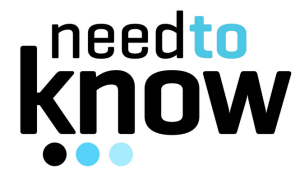 Today, it is the non-financial performance, made up of mostly the intangibles within organizations, that is accounting for upwards of 80% of present investors’ valuation of our organizations so are we measuring what really matters?.
Today, it is the non-financial performance, made up of mostly the intangibles within organizations, that is accounting for upwards of 80% of present investors’ valuation of our organizations so are we measuring what really matters?.
Yet do shareholders really have the knowledge to judge the real source of value creation inside our organizations? I think not but they should. Does Management actually themselves, equally I often think not?
We lack a real line of sight into the true value of our organizations.
There is a pressing need to connect the real sources of value creation and these come from all our capitals and bring this clearly into the ‘line of sight’ of the management itself within our business organizations, as well as the shareholders.
There is this chronic lack of real understanding of where the true value does come from or if it is known, given the public recognition, it deserves beyond the usual “oh, it’s in the business model” or similar assumption- what is?
Where does real value lie?
Let’s begin with the makeup of capitals. Often when you begin to talk of capital, automatically the financials come to mind. The financial decisions and results are an outcome of our ability to leverage all the other capitals making up our organizations. Most of these are intangibles and you often get that glazed look and the standard reply “intangibles are difficult to measure”.
Yet they really do need to be effectively measured and understood. They need to be really understood to know where the value creation potential does actually lie.
Knowing the values of these can determine the gaps that need plugging and the potential that can be leveraged in what you have available to you.
Understanding ALL the capitals within our organizations is essential
Thankfully understanding our capitals, beyond the financials, has been a work-in-progress for many years, we know more about it yet it still remains grossly understated within any of the reporting mechanisms organizations make.
The need to make our intangibles that remain invisible on our present balance sheets has to be addressed. These are the ones that makeup:
1) the internal structures, processes, routines, databases that contribute to the structural capital,
2) the external structures where external relationships, networks and customer capital contribute to the make-up of relationship capitals, and
3) the competencies that include individual experiences, knowledge, competencies, skills, capacity to learn, and the absorption and translation of an idea that all build and contribute to the human capital aspects of our organizations.
Turning the intangible light switch on is becoming essential
Management is still groping in the dark on measuring its intangibles, yet there is this pressing need to find the light switch and through the spotlights on the understanding of all the intangibles that make up our organizations, be these ones regarded as the classics of human, relationship and structured capital.
Often intangibles are fused with intellectual capital in discussions and that makes it often even harder to gain the serious attention of management.
Thankfully this is changing as the realization is growing that organizations must understand where their sources of value creation are actually lying, otherwise they are back in the dark, stumbling around and not sure what they are doing on the true underlying impact of their sustaining performance. It is about time they are ‘called out’ on this.
Making the business impact more explicit is required.
We can go deeper within our organizations to analyse. We can seek out the non-financial drivers that analysts should focus upon as being measured and reported upon?
Today we are placing high premiums on the intangibles but investors lack the understanding of the value gap and what makes this up. There is a real understanding gap. We need the business to adapt far more too today’s dynamics and explain the ways they are ‘setting about’ this.
We need to gain a greater insight into many things
Those aspects that make up explicit understanding of strategic execution and organization alignment, the underlying make-up of the governance and management credibility, the quality and consistent ongoing evaluation of the strategy and the operational agility to support any changes.
Also there is a real need to understand the real innovativeness occurring within or around the organization, what is flowing in and out of the organization. Also understanding what mechanisms and structures are specifically in place to attract and retain talented people beyond existing monetary incentives or stock options.
Then what is the possible impact of significant key executive losses ‘just’ underneath the more visible board member that might have a material impact on the business.
Each has a significant impact on future earning and it is the executive that can demonstrate and show their ability to manage ‘forward’ will have the higher value premium placed on their organizations ability to attract greater investment sentiment.
Then we need to explore other dynamic factors that have a substantial impact on potential
How often do you hear thoughtful and coherent explanations of market positions, besides the market ranking, the depth in management experience?
Or the understanding of the quality and ongoing upgrading of major processes that are not generic statements but factual and measurement driven and lastly the progress made in research leadership beyond the top-level picture of “areas of focus” so you can truly assess the innovation pipeline and its potential impact beyond the immediate.
We are rapidly moving from physical to knowledge based, often very intellectual based enterprises and knowing where the real value lies is becoming absolutely essential to understand. This will require a significant shift in existing managerial mindsets.
We need to start asking real questions relating to organizational assets?

What and where are the resources that are expected to generate future sustaining benefits and growth- should they not be more viable within the organizations?
We need to start asking more specific questions:
• Are you measuring the intangible content of your organization and focusing on this strategically?
• What confidence do you have in sustaining the future growth, what are the risks and what would options are you considering for growing in alternative values?
• How do you exploit the tangible assets and relate these with the higher asset values you extract from your intangibles- how are you aligning these efficiently and more effectively?
• If you agree that intangible assets are the or one of the major sources of value, creation and sustainability what explicit plans have you in place for developing and protecting these? What are these plans?
• How do you actually combine all your assets to create existing value, productivity and innovation and where will these be changing in the future to achieve ongoing and sustaining growth?
What are your concerns on this asset combination that needs addressing going forward?
We should seek better visibility into our organizations
 Better outcomes and a greater relationship between investors and the organization needs to be achieved.
Better outcomes and a greater relationship between investors and the organization needs to be achieved.
I think it is possible but it is a journey many today are reluctant to travel.
It is not beyond the capabilities and ingenuity of the organizations themselves, so they can begin to map this new path. A pathway towards generating a better understanding of the non-financial assets that are making up their ongoing real performance.
Knowing what makes up the real value of an organization’s total assets I think it is possible. We certainly need to go beyond just the present-day financials and some generalised statements that are not real measures of true ‘wealth generating’ understanding.
Will this change happen?
This is, of course, is another story but I believe there is a ‘wind of change’ blowing that might kick-start this dramatic shift to measuring the real value aspects of our organization and those that lie in the intangibles and we can make these far more explicit, that is for sure.
I hope it starts blowing really hard so we can finally clear away the cobwebs of old-style thinking, gathered primarily around financial capital.

Dear Paul Thanks a lot for your blog post. I totally agree, a change of perspective is needed and there is a lot of work to be done. Maybe/hopefully the shift in perspective will ultimately result in simplifying things? Best regards Pia Koch
I agree, Paul.
For me, the questions are all centred on measuring how well an organisation is building its brand equity – including employee equity.
Nice perspective, thanks.